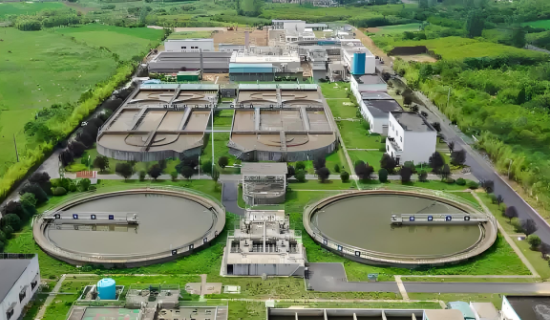Background of odor online monitoring system for sewage treatment plant
The generation of foul odors in sewage treatment plants mainly comes from the decomposition process of organic matter, especially under anaerobic conditions, where the release of gases such as ammonia, hydrogen sulfide, and methane is a common cause. These gases not only have adverse effects on the surrounding environment and air quality, but may also pose a threat to human health, such as stimulating the respiratory tract, causing dizziness, nausea, and other symptoms. Long term exposure may lead to chronic health problems. With the expansion of urban sewage treatment scale, the problem of odor is becoming increasingly serious, and traditional manual monitoring methods are no longer able to meet the real-time and comprehensive needs. Therefore, adopting an online odor monitoring system can not only detect and warn the concentration of odorous gases in real time, but also take corresponding measures in a timely manner to effectively reduce the impact of odors, ensure the health of surrounding residents and workers, and improve the environmental management level of sewage treatment plants.

Odor characteristics
The foul odor of sewage treatment plants mainly comes from sewage and sludge treatment. Different sewage and sludge treatment and disposal processes result in different odor components and concentrations. In general, the odor production of short mud age processes (such as conventional aeration processes) is higher than that of long mud age processes (such as oxidation ditches), and anaerobic processes are higher than aerobic processes. In the process of sewage treatment, when the dissolved oxygen in the sewage is very low or zero, bacteria reduce the sulfate in the sewage to sulfite and sulfide, thereby generating hydrogen sulfide gas. The solid particles in the sewage undergo anaerobic and aerobic digestion to produce a large amount of ammonia gas. Under normal pH conditions, ammonia has a high solubility in water, but as the pH increases, ammonia is highly volatile. Therefore, the concentration of ammonia produced during sludge treatment using caustic soda as a regulator is usually very high.
product solution
on-line monitoring
The OSEN-OU odor online monitoring system uses a pump suction method to detect gases, and the sensitive components are high-quality imported gas sensors with excellent sensitivity and repeatability; The instrument is controlled by an embedded microcomputer, with simple operation, complete functions, high reliability, and multiple adaptive capabilities; By using touch LCD and LED displays, relevant data can be viewed intuitively and clearly, with strong human-computer interaction.

Equipment parameters
Sampling method: pump suction
Detection factors: hydrogen sulfide, ammonia, methyl mercaptan, methyl sulfide, odor value. Hydrogen sulfide: 0-20PPM, resolution: 0.01PPM
Ammonia gas: 0~50PPM, resolution: 0.01PPM
Range (customizable according to actual scenarios): Methyl mercaptan: 0~20PPM, resolution: 0.1PPM Methyl sulfide: 0~20PPM, resolution: 0.1PPM Odor OU value: 0~2000PPM Calculated by big data model algorithm
Accuracy: ≤ ±5%
Response time: ≤ 60 seconds
Linear error: ≤ ±3%
Operation mode: touch screen
Installation method: Column, wall mounted
Display mode: 7-inch touch high-definition display screen, personalized customized LED screen
Signal output: Wireless 4G full network, seamlessly integrated with enterprise platforms and environmental protection bureau platforms; Wired: RS485 or RJ45
Environmental temperature: -30~70 ℃ (processor); Relative humidity 0% -90% RH (processor)
Keyword:



